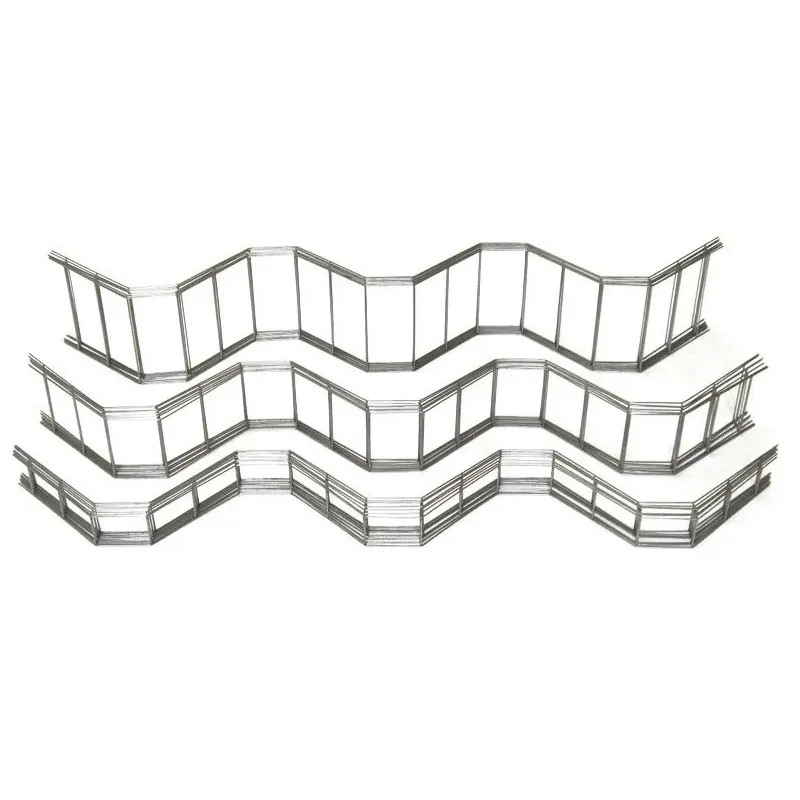
- Mobile Phone
- +8613931874955
- sales@cntcmetal.com
extended hook spring
The Extended Hook Spring A Versatile Component in Mechanical Design
The extended hook spring, also known as a hook-shaped tension spring, is an essential component in various mechanical applications. Its unique design and functionality make it a valuable asset in industries ranging from automotive engineering to consumer electronics. In this article, we will explore the structure, applications, advantages, and considerations associated with the extended hook spring.
Structure of the Extended Hook Spring
An extended hook spring is characterized by its helical coil shape, which extends the force exerted when the coil is elongated. The hooks at both ends of the spring serve as attachment points, allowing it to connect seamlessly with other components in a mechanical system. This design is ideal for applications requiring tension or the maintenance of a specific distance between parts. The hooks can be customized according to the specific needs of a project, facilitating easy integration into diverse systems.
Applications of Extended Hook Springs
Extended hook springs find their utility in a myriad of applications. In the automotive industry, they are used in seat mechanisms to ensure the seats remain securely in place while still allowing for adjustments. This capability enhances comfort and safety for passengers.
In consumer electronics, these springs are often found in retractable mechanisms, such as automatic doors and screens. The force exerted by the spring can hold the door in a closed position while allowing for a smooth opening action when needed. They are also used in toys, where they contribute to the bouncing or pulling mechanisms, adding to the entertainment value.
Moreover, extended hook springs are prevalent in industrial machinery, where they ensure that components operate in harmony. For instance, in conveyor systems, these springs can help maintain tension in belts or adjust the positioning of various moving parts, promoting efficiency and reliability in operations.
Advantages of Extended Hook Springs
extended hook spring

One of the primary advantages of the extended hook spring is its ability to absorb shock and reduce wear and tear on machinery. By acting as a cushion, these springs minimize the impact forces that can cause damage over time, thereby extending the lifespan of critical components.
Additionally, the customization options for extended hook springs allow engineers to tailor them to specific loads and requirements, ensuring optimal performance. This adaptability is crucial in dynamic environments where different forces are at play, and a one-size-fits-all solution is often inadequate.
The ease of installation and replacement is another significant benefit. With the predefined hook design, these springs can be quickly integrated or removed from systems, minimizing downtime during repairs or upgrades.
Considerations in Using Extended Hook Springs
While extended hook springs offer numerous advantages, there are also considerations that designers must keep in mind. The material selection is critical, as different materials can impact the spring's strength, fatigue resistance, and overall performance. Common materials include stainless steel, music wire, and high-carbon steel, depending on the application environment.
Engineers also need to consider the load requirements and the operating environment of the spring. Factors such as temperature, potential corrosive elements, and load fluctuations can significantly impact the lifespan and reliability of the spring.
Conclusion
In conclusion, the extended hook spring is a versatile and valuable component in the field of mechanical design. Its unique structure, coupled with its wide range of applications, makes it an indispensable part of many systems. By understanding its advantages and considerations, engineers can leverage the capabilities of the extended hook spring to create more efficient, reliable, and functional mechanical solutions across various industries. As technology continues to advance, the role of such springs is likely to expand, further solidifying their importance in mechanical engineering.
share:
-
Your Source for Concrete Wall Ties and Masonry AccessoriesNewsJul.10,2025
-
Unlocking the Power of Iron Wire for Every ProjectNewsJul.10,2025
-
Explore Advanced Chain Wire and Stainless Steel Mesh FencingNewsJul.10,2025
-
Discover the Benefits of Annealed Wire ProductsNewsJul.10,2025
-
Discover China Stainless Steel Wire Mesh SolutionsNewsJul.10,2025
-
Build with Confidence Using High-Performance Masonry AccessoriesNewsJul.10,2025
-
Why Sacrificial Formwork Is Redefining Underground ConstructionNewsJun.06,2025



















